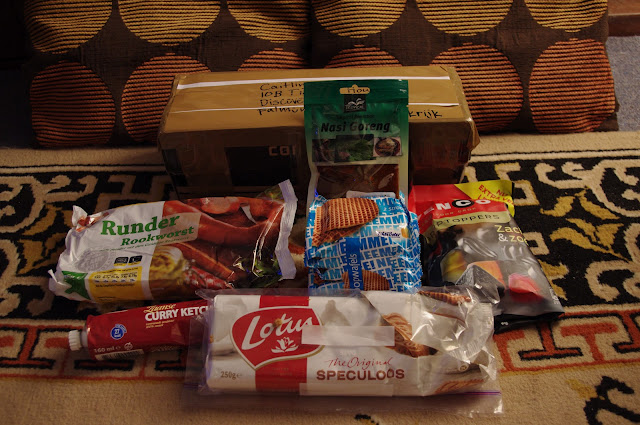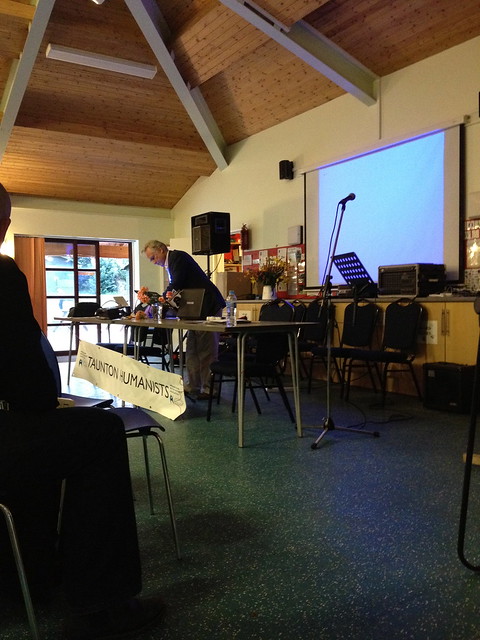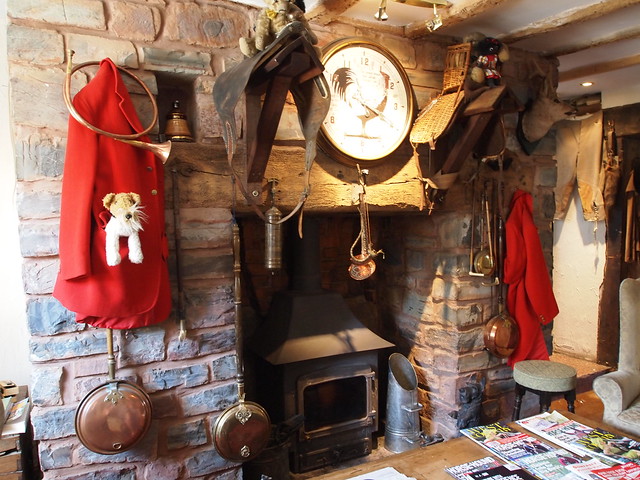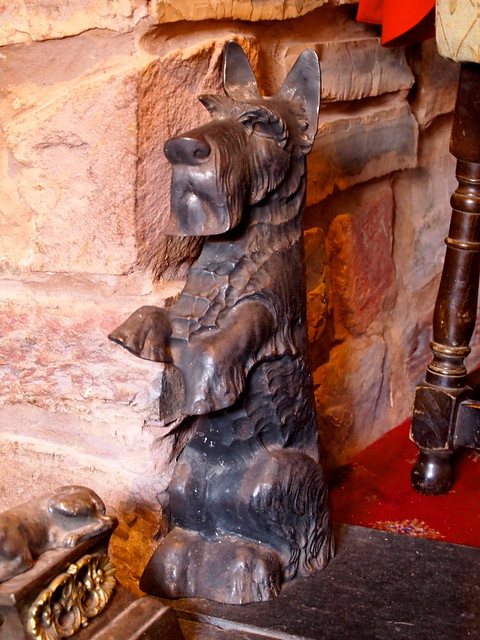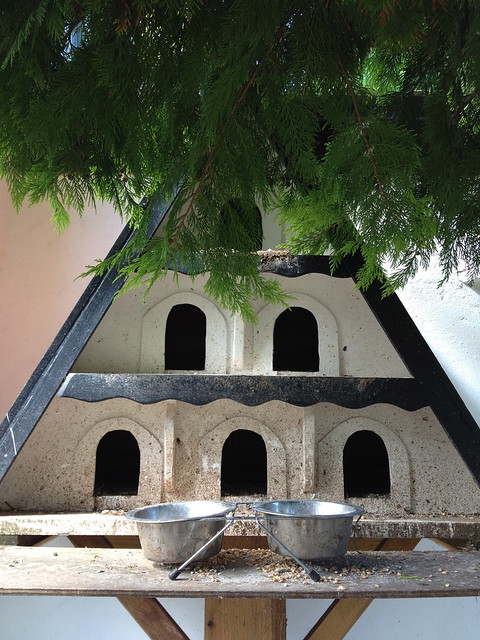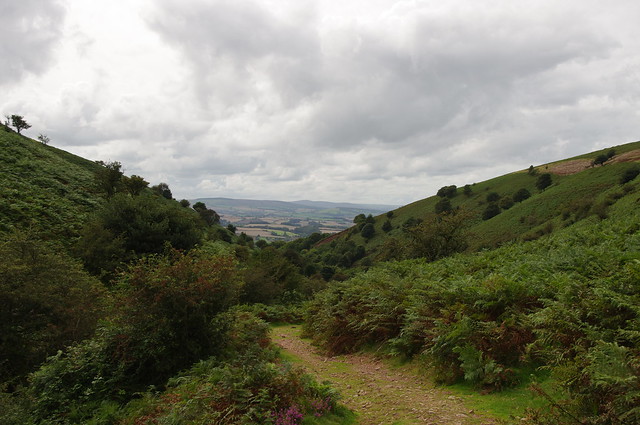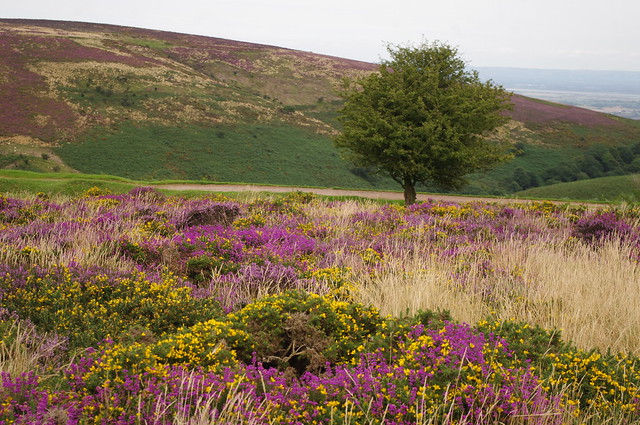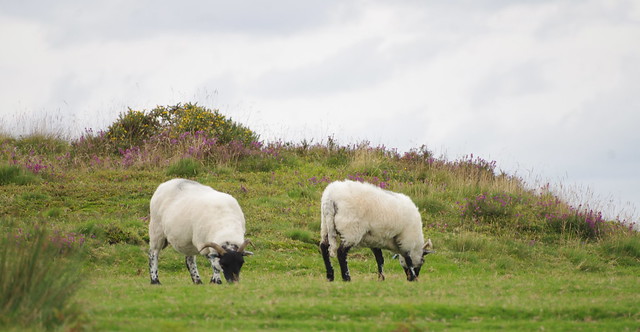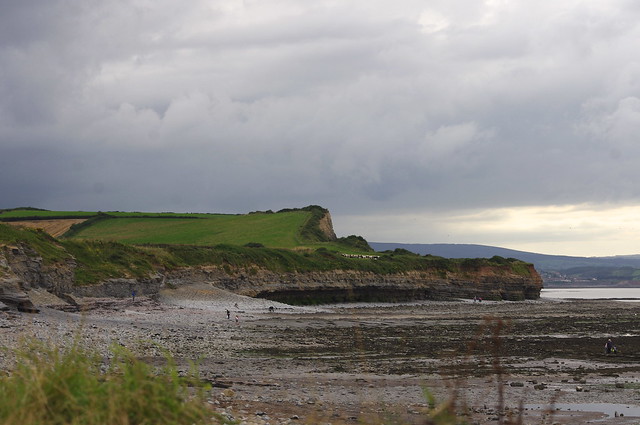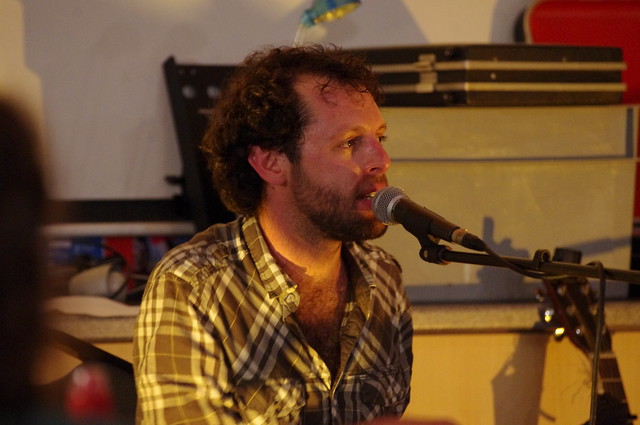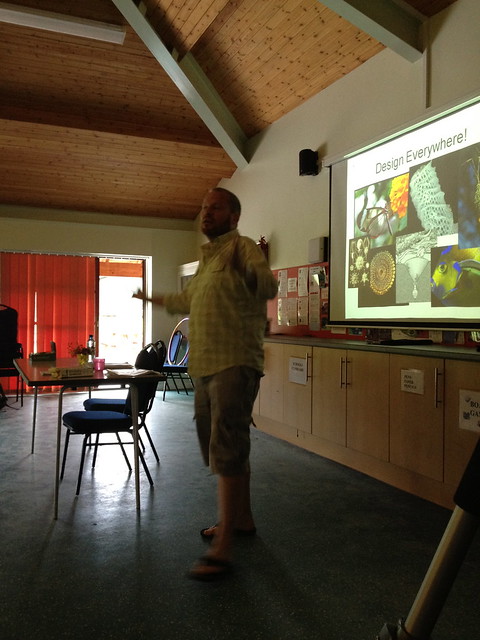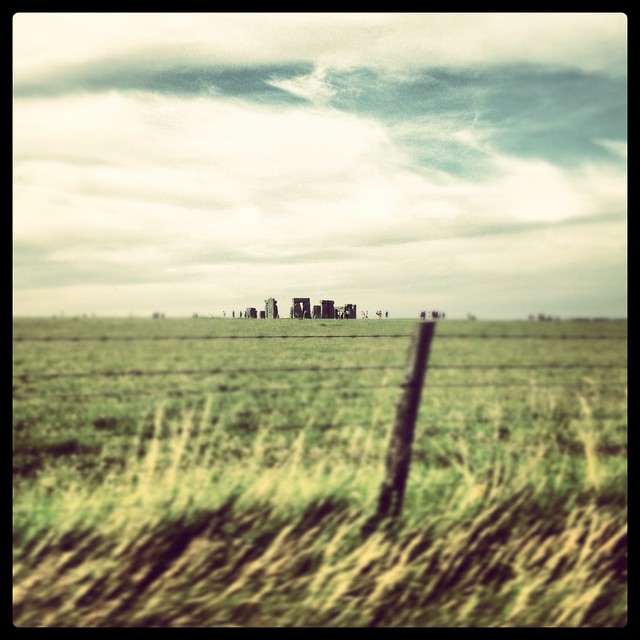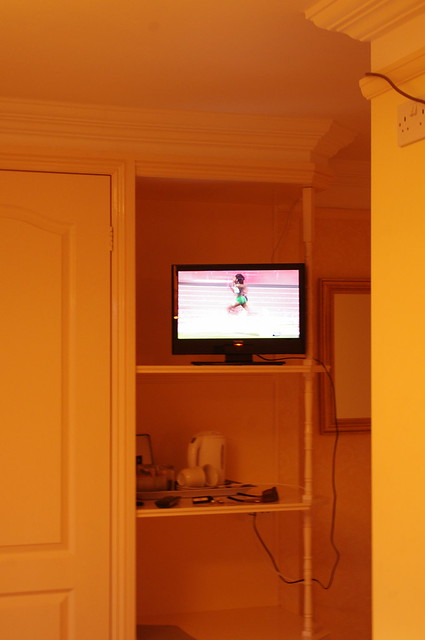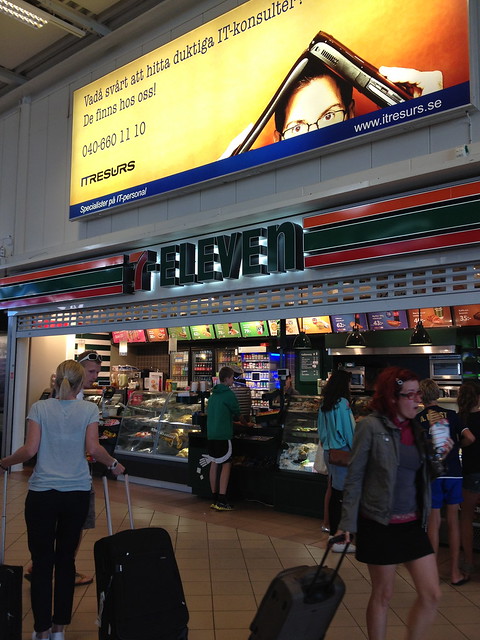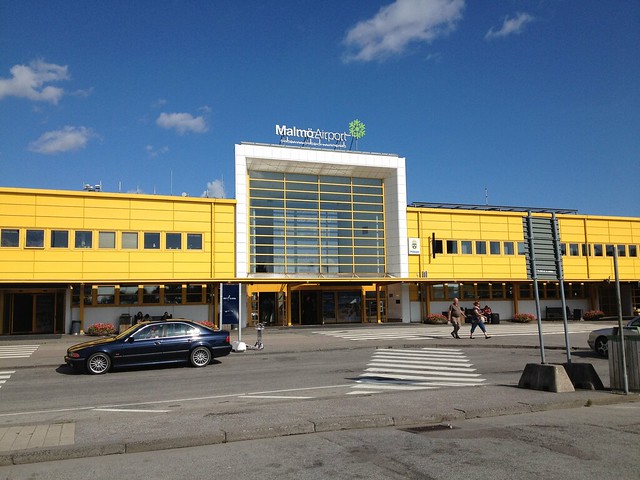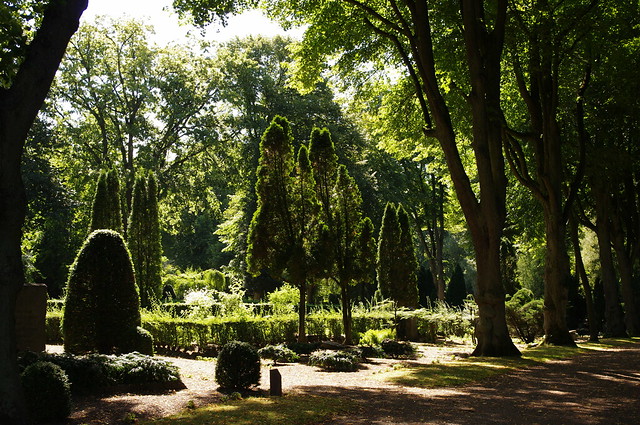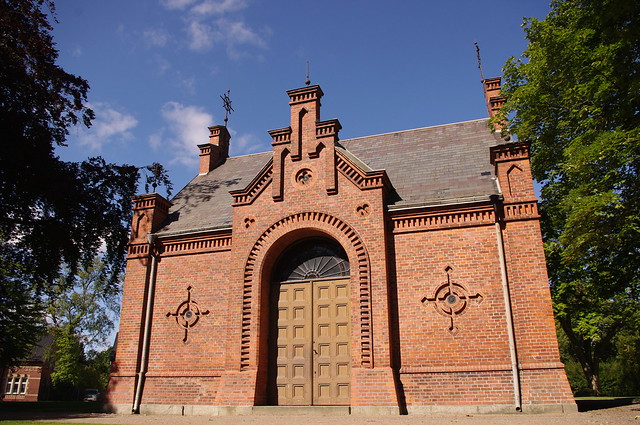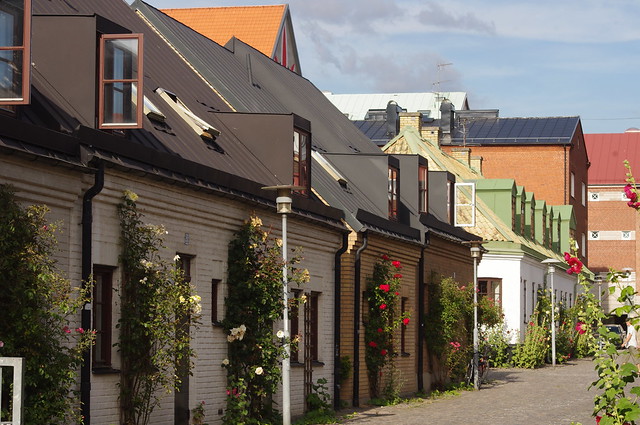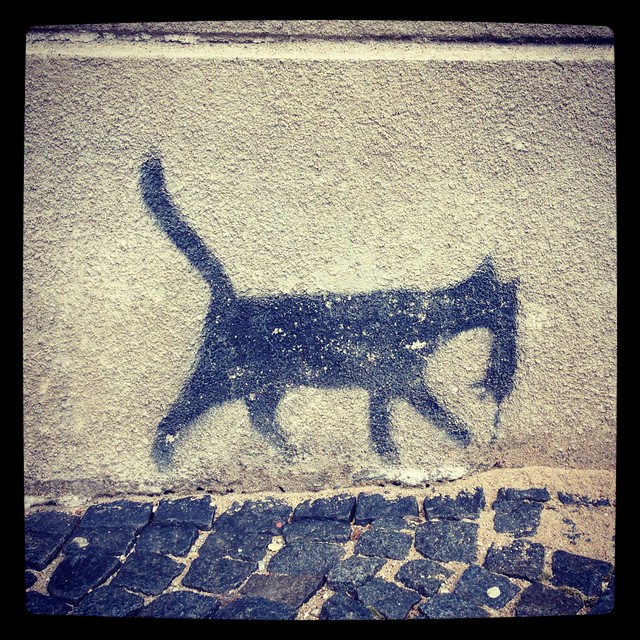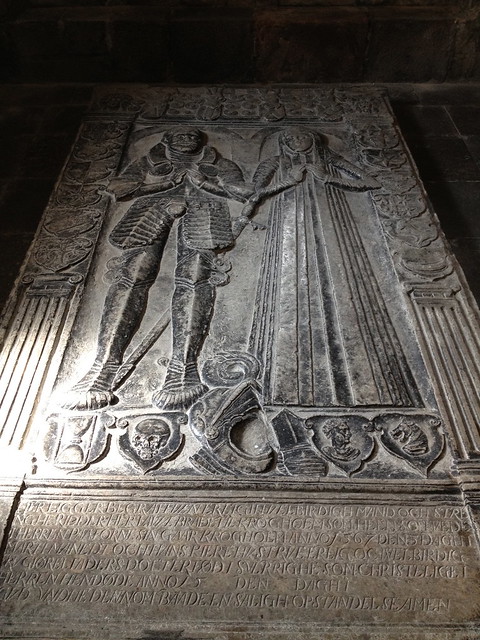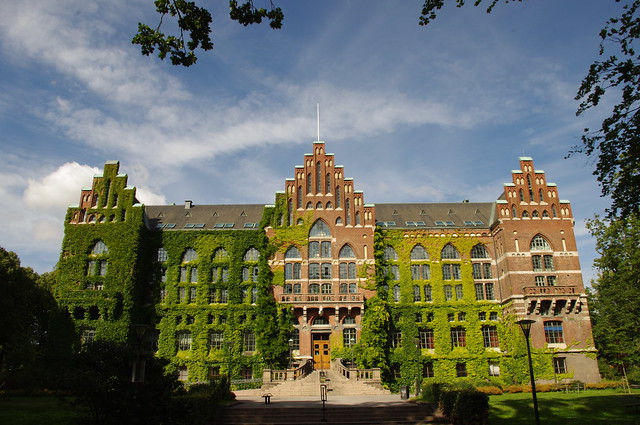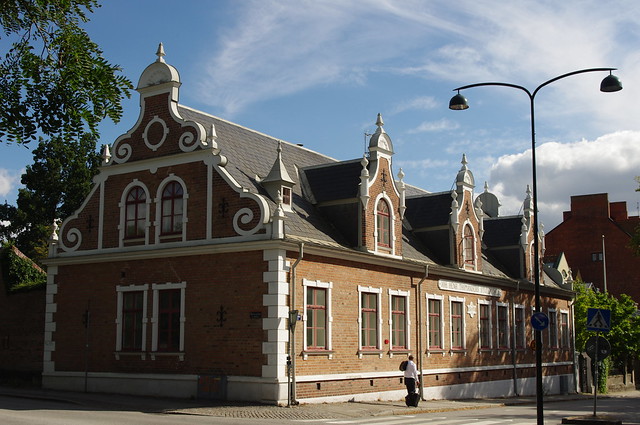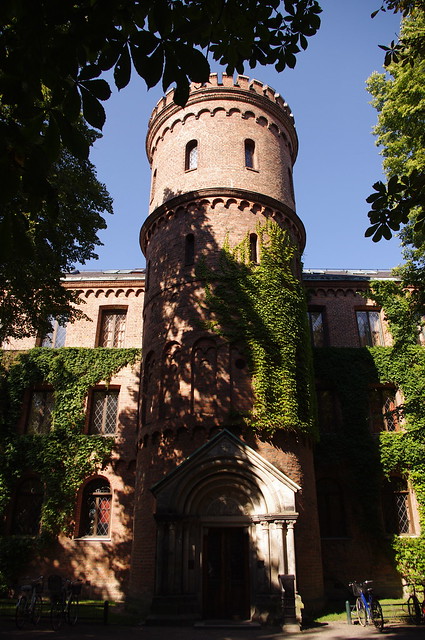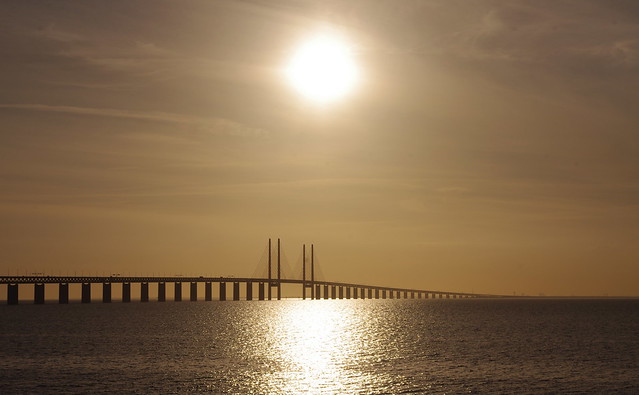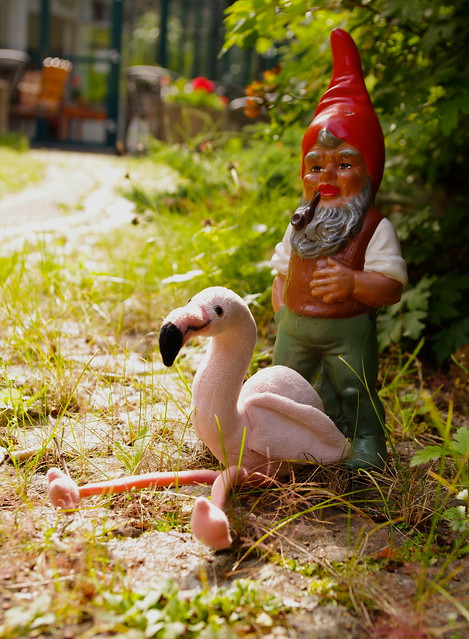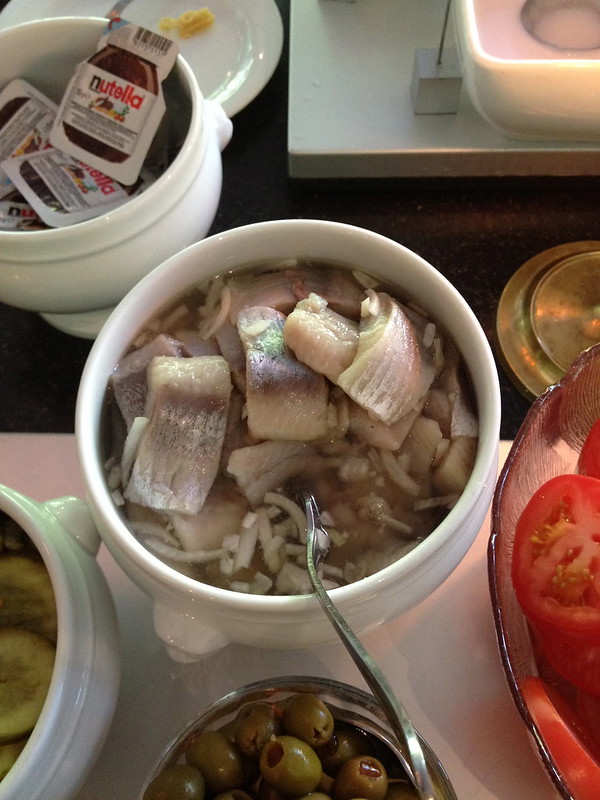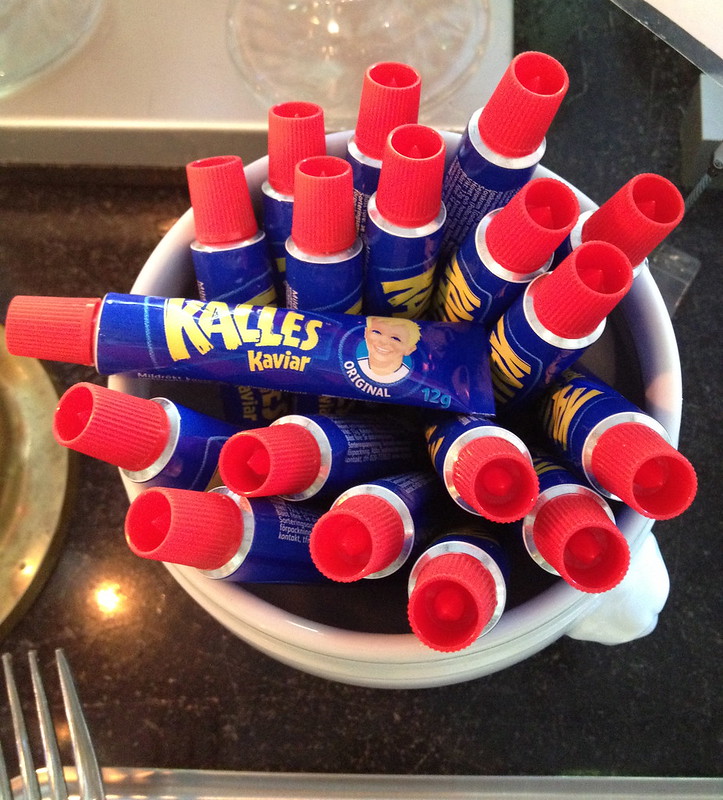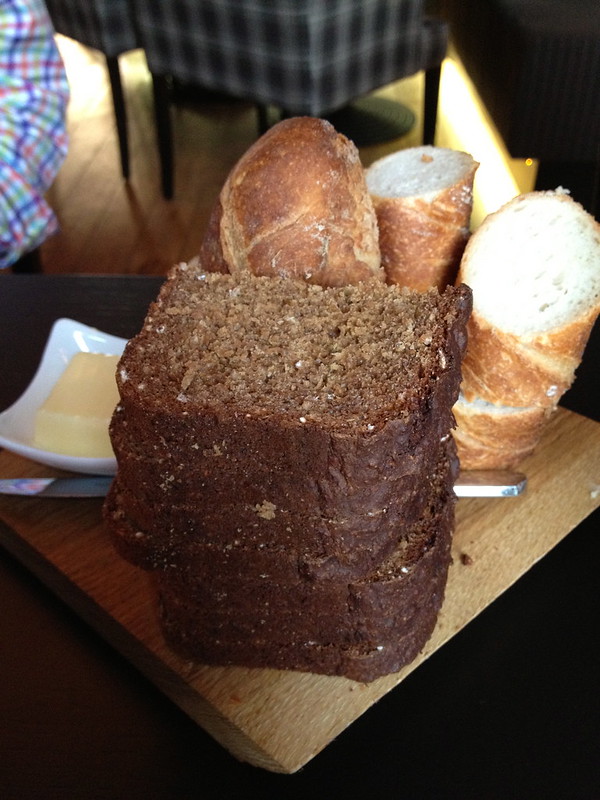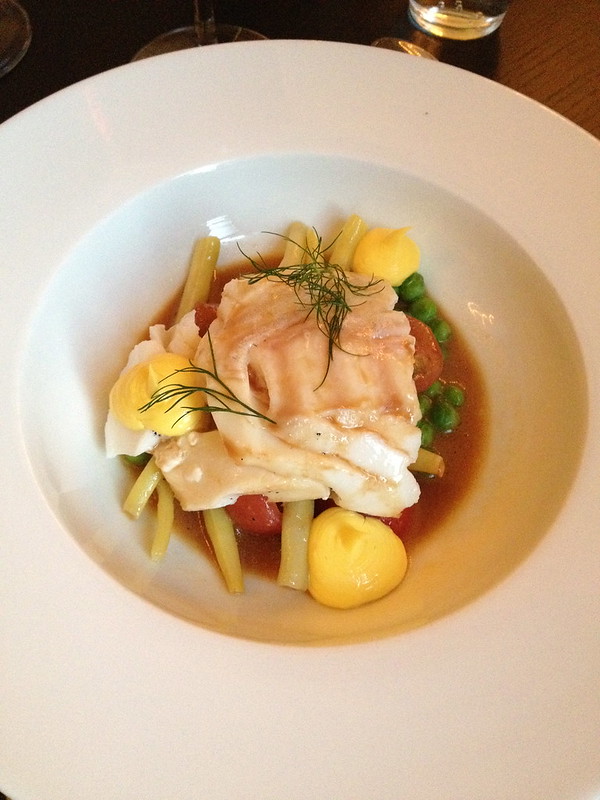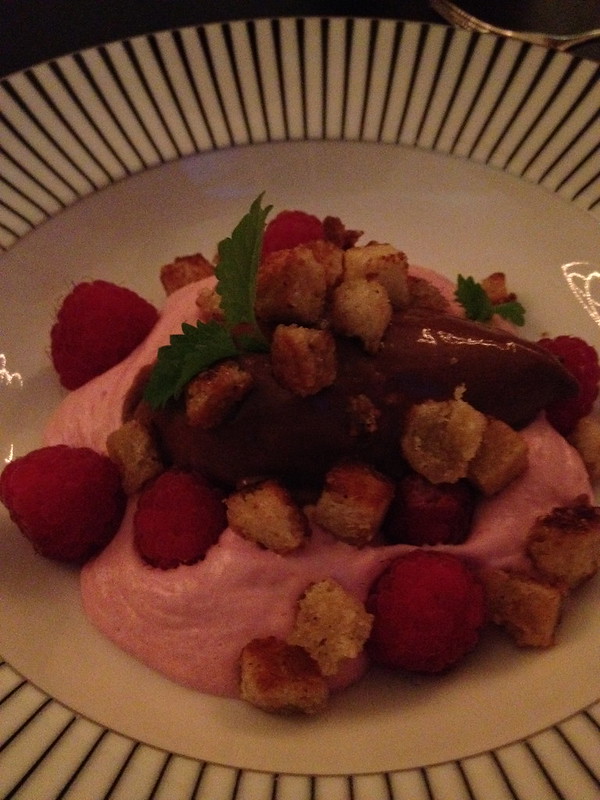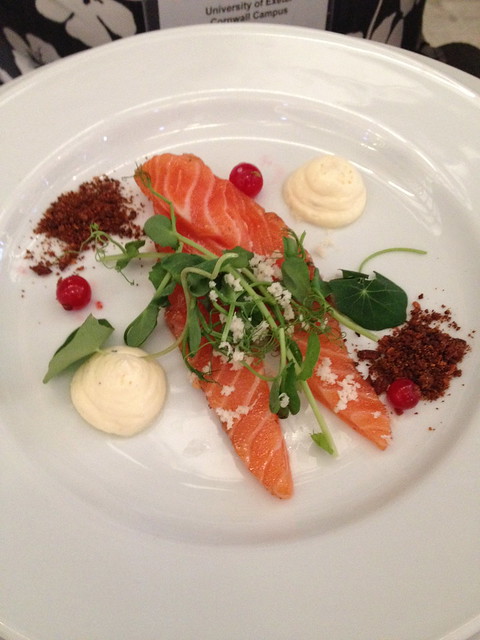The biennial conference of the International Society for Behavioral Ecology may not sound, to most ordinary people, like a romantic event, but it is where my husband and I were first introduced (Tours, France, 2006), where we had our first date (Ithaca, New York, 2008), and where we had our belated honeymoon (Perth, Australia, 2010). In other words, it's a fairly big deal in our little family, and also, of course, in the field of behavioral ecology. Earlier this year, we wasted no time in signing ourselves up to attend ISBE 2012 in Lund, Sweden--a location that, happily, allowed me to finally fulfill my dream of visiting Scandinavia.
Unfortunately, getting
to Scandinavia required getting
past this: a seemingly endless line of cars. Funnily enough, this is the seemingly endless line of cars that we encountered on a detour we took in order to avoid
another seemingly endless line of cars on the main road off the western peninsula of England. All told, our trip ended up being about 8 hours long when it should have been about 6. The only benefit of our meandering was an encounter with one of Britain's most iconic landmarks:
(Tiny Stonehenge in the distance.)
We'd hoped to reach our destination, the
Harwood Guest House, in time to watch Mo Farrah's bid to win a gold medal in the 5,000-m Olympic run. Tragically, we were still on the road when his race began, but my iPhone saved the day and we were able to see the big event in miniature (our excitement, however, was supersized). Once we finally did arrive at our B&B, we wasted no time turning on the television in order to watch more of the night's competitions:
Sadly, we did eventually have to leave our room in order to go have dinner. For the second time, we tried and failed to eat at Indochine, an Asian-themed restaurant highly recommended by our hosts. This worked out well for us, since it meant that we ended up having dinner at Dunmow's China Garden Restaurant.
(Before...)
Having Chinese food
in situ seems kind of novel and exciting these days, since this has been the go-to take-out genre for the past 2 decades of my life. Sasha and I had a really excellent meal consisting of pepper shrimp, veggie and tofu stir-fry, and mushroom stir-fry. It was ridiculously affordable, and Sasha and I were well aware that we would look back on this cheap meal with wistful fondness once we got to Sweden.
(...and after.)
The next morning, we headed over to Stansted Airport for the second (and final) time this summer. We browsed through the Olympics store while we waited for our flight, more out of curiosity than anything else. The merchandise was generally too expensive to be tempting, but a part of me still wanted to buy something to commemorate the year that I saw the torch in my very own town. That's when I saw this:
Given my sudden and peculiar obsession with the rhythmic gymnastics events this year, I just couldn't say no. Treasure in hand, I reported to the gate to finally head to Sweden.
Once I arrived, a mere 1.5 hours later, I was amazed to discover that Sweden has these:
(7-11s in Sweden. Amazing.)
I also quickly realized that they have terrible taste in architecture and/or exterior decorating:
(Malmo Airport, from which we took a ~30-minute taxi ride into Lund.)
Our journey into Lund was memorable only because the taxi driver tried to rip us off. The conference paperwork emphasized the need to negotiate taxi prices before getting into the vehicle, and our experience demonstrated why this was a vital tactic. Even though we had already agreed upon a particular price--with not only our driver but also another driver from the same company who was simultaneously taking a car-load of our colleagues to another hotel--the driver suddenly tried to charge us more once we reached our destination. Sadly for him, the driver did not count on Sasha's haggling skills, honed during a lifetime of living and traveling in third-world countries. Needless to say, we did not pay a penny more than the original quote, and we also did not pay a tip.
We had booked ourselves a room at the Hotel Djingis Khan, which, at the time of our registration, was the cheapest conference-recommended hotel in Lund. Unfortunately, it was also one of the farthest away from the conference facilities; it took about 25 minutes to walk into town. This ultimately had two benefits. First, because we were situated away from the hustle and bustle of the city, our room was exceedingly quiet and restful. Second, the walk into Lund involved a shortcut through the north "kyrkogarden," or graveyard. That sounds like a dubious benefit, I know, but as the Swedish name suggests, the graveyard really was a "garden," and it was quite lovely:
(I have no idea what this building is--a crypt? a chapel?)
I wandered around the graveyard every day and, uniquely for me, even at night--we had to pass through it in order to get home at the end of the evening. I'd never actually been in a cemetery at night, thought it is something I've always found appealing in a sort of morbid, horror-movie-loving kind of way. This particular cemetery was far removed from the haunted ones you see in films, because it was incredibly clean and well-tended; as the photo of the gravel patterns shows, there was a sort of Chinese rock garden quality about the place. People come in the evening to light candles and lanterns at some of the plots, so when you walk through in the dark, you can see the lights winking in the distance. It is all very calm and peaceful.
Although I attended both the opening and closing events at the conference, I spent most of the week holed up in my hotel room doing work; such is life. However, I did make time to take my normal daily walk, only in this instance I was doing it in an interesting foreign town, with my camera in hand.
(I can't believe people live in homes this cute. I want one of these, hollyhocks and all.)
One of the nice things about sightseeing on foot is that you stumble across places you'd never see from a tour bus, or when taxiing from one landmark to the next. This incredibly picturesque neighborhood, for example, was something I just happened to find when taking a short cut back to the town center after sussing out the location of the botanical garden.
Likewise, this cat "graffiti"--which is probably my favorite find of the whole trip--was a pleasant surprise along a new route that I took one day into town.

Of course, that doesn't mean I avoided the famous sights, such as Lund's cathedral, or Lund Domkyrka. Actually, it would be pretty hard not to see the cathedral, since it's right in the center of town and is a pretty obvious feature of the skyline. It is a Lutheran cathedral, and the seat of the Church of Sweden's Bishop of Lund. Lund's first cathedral was built in the 11th century, and this more recent version--bits of which date back to the 13th century--may or may not stand in the same place. Its exterior is not as impressive as many that you will see elsewhere in Europe (particularly in Italy, Spain, and France), but it has many lovely features nonetheless. These include a 15th-century astronomical clock, giant organs (I'm not being euphemistic here--I'm referring to an instrument), and a crypt that dates back to the 12th century and has unusual and mysterious carvings on its columns. You'll also find standard cathedral-y things like ornate choir seating, impressive frescos and mosaics, and giant candelabra:

(Someone's going to need a loooong match.)
(The 15th-century clock, which still works.)
(One of the tombs in the crypt, which has remained virtually untouched since the 12th century.)
Another "attraction" that you really can't miss is Lund University. Consistently ranked among the world's top 100 institutions of higher learning, LU (as I'm sure the Swedes
don't call it) dates back to 1425, when the Franciscans founded a university next to the cathedral. LU's buildings were designed and crafted during a variety of different eras, but all manage to exude that stereotypical learned European vibe:
(Why doesn't my university have a turret?)
For most of our stay in Lund, the weather was absolutely beautiful; the skies were brilliant blue, the clouds were picturesque, the air was warm (sometimes even hot!), and the landscape was dotted with all sorts of wildlife. It was hard to think about spending any unnecessary time indoors, and so I bypassed Lund's many museums in favor of al fresco attractions such as the Botniska Tradgarden:
(I love it when plants are labeled with little signs so that I don't have
to wonder what in the world I'm looking at; sometimes when I spend too
long in botanical gardens, the next time I'm out in nature I get
confused when I can't find any plaques.)
(Look closely and you will see a baby water rail among the reeds.)
The garden was huge, featuring both indoor and outdoor plantings representative of seemingly every major biome. It was also free, which, thanks to Sweden's incredibly high prices, was an even better deal than usual.
On our final evening in Lund, we hopped on a bus to Luftkastellet, the venue for the ISBE conference
banquet. Because the facility is located along the shoreline looking out over the strait between Sweden and Denmark, I had assumed it was a historical building--like the castle where we banqueted in
Italy. I was a little disappointed to discover that it was, in fact, a nearly brand-new building, but I was certainly not disappointed with the view:
The next day, there was not much left to do other than check out of our room, loaf around in the hotel lounge (taking advantage of the free wi-fi that we were not able to detect in our room), and get a taxi ride (from a former professional international football referee!) back to Malmo Airport. I did, however, manage to squeeze in a quick photo op with my faithful pink travel companion:
(Florian, making friends with the gnome in our hotel's back garden.)
I don't know whether I will ever again be an ISBE delegate, since my academic career may be winding to a close. Sasha, however, will undoubtedly remain a fixture at the event, and I will tag along when I can. ISBE 2014 will be held in New York City, so my next conference report will be filed from the motherland!
